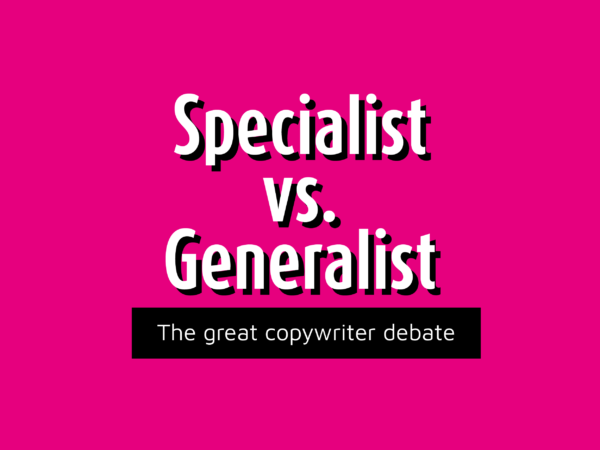When to cut ‘that’ from your writing
In writing, most instances of ‘that’ are utter word fluff. If you’ve got a word count to hit and you’re struggling to cut your copy, try starting with ‘that’…

Ahhhh, ‘that’. Chief enemy of concision. Ongoing adversary of brevity. Primary agitator of the truncated word count.
‘That’ is quite possibly the most unnecessarily overused word in the English language. The chances are, at least 50% of the time you plonk this particular four-letter nugget on your page, you really don’t need to.
So if you ever find yourself needing to hack 50 words from an already streamlined piece of writing, try starting with that. Literally.
Word fluff like ‘that’ is the enemy of good writing not just because it adds unnecessary girth to your word count, but because it makes your writing harder to read.
What does ‘that’ mean?
The Oxford online dictionary categorises ‘that’ in four different ways. Yes, FOUR.
Depending on how the word is used, it can act as:
- A pronoun
- A determiner
- An adverb; and
- A conjunction
The first three usages are all helpful in that they add specificity to what’s being said, as well as to what it’s being said about.
For example:
‘That’s my bike over there’ – pronoun
‘I was working for the local newspaper at that time’ – determiner
‘I couldn’t eat my dinner, I was that ill’ – adverb
These kinds of ‘that’ are important when it comes to writing. They add meaning. They add context. Your word count can accommodate those.
It’s that pesky fourth function that’s the issue. Most of those thats we can get rid of.
If you can remove ‘that’ without altering the intended meaning or context of the sentence, get rid of it
Need a pro to cut your word count? Send me an email!
How to get rid of ‘that’
A good rule of thumb for identifying which instances of ‘that’ you can delete is… well, to delete one and see if the sentence still makes sense. If you can remove ‘that’ without altering the intended meaning or context of the sentence, get rid of it. Easy.
Check out these examples:
🚩 ‘Our research shows that most people stop drinking coffee at lunchtime.’
🚩 ‘I can write a blog post in a fraction of the time that it takes me to create an Instagram carousel post.’
🚩 ‘Our jewel-encrusted meerkat collar is the classiest that you will find.’
See how ‘that’ sneaks in there but doesn’t actually add anything?
If we delete it, all those sentences mean exactly the same as they did:
🚩 ‘Our research shows most people stop drinking coffee at lunchtime.’
🚩 ‘I can write a blog post in a fraction of the time it takes me to create an Instagram carousel post.’
🚩 ‘Our jewel-encrusted meerkat collar is the classiest you will find.’
See: Utter word fluff.
Fluff that
Word fluff like ‘that’ is the enemy of good writing not just because it adds unnecessary girth to your word count, but because it makes your writing harder to read.
Writing is always most effective when it is clear and concise, and peppering your prose with redundant ‘thats’ makes it much harder to understand and digest.
Try reading those examples again and see what I mean.
You probably read them in your internal voice, which is always more conversational in tone. If you did, you might even have fumbled when you got to ‘that’. Why? Because we don’t use unnecessary ‘thats’ in conversation, so it interrupts our rhythm when we’re reading them in our heads.
Word fluff like ‘that’ is the enemy of good writing not just because it adds unnecessary girth to your word count, but because it makes your writing harder to read
Find and delete that
The next time you’ve got an essay that needs cutting down, or an article that’s too long, or even an Instagram caption that won’t fit within the character limit, try searching the document for the word ‘that’ and seeing if there are any you can get rid of. If deleting it doesn’t change the meaning or the context of the sentence, get rid.
And if you’ve done that and you’re still struggling to trim your word count, give me a shout. I’m a trained journo and proofreader with nearly two decades of experience, and I can help wrangle your words in no time.
Send me an email and I’ll get you booked in.
And that’s that.


